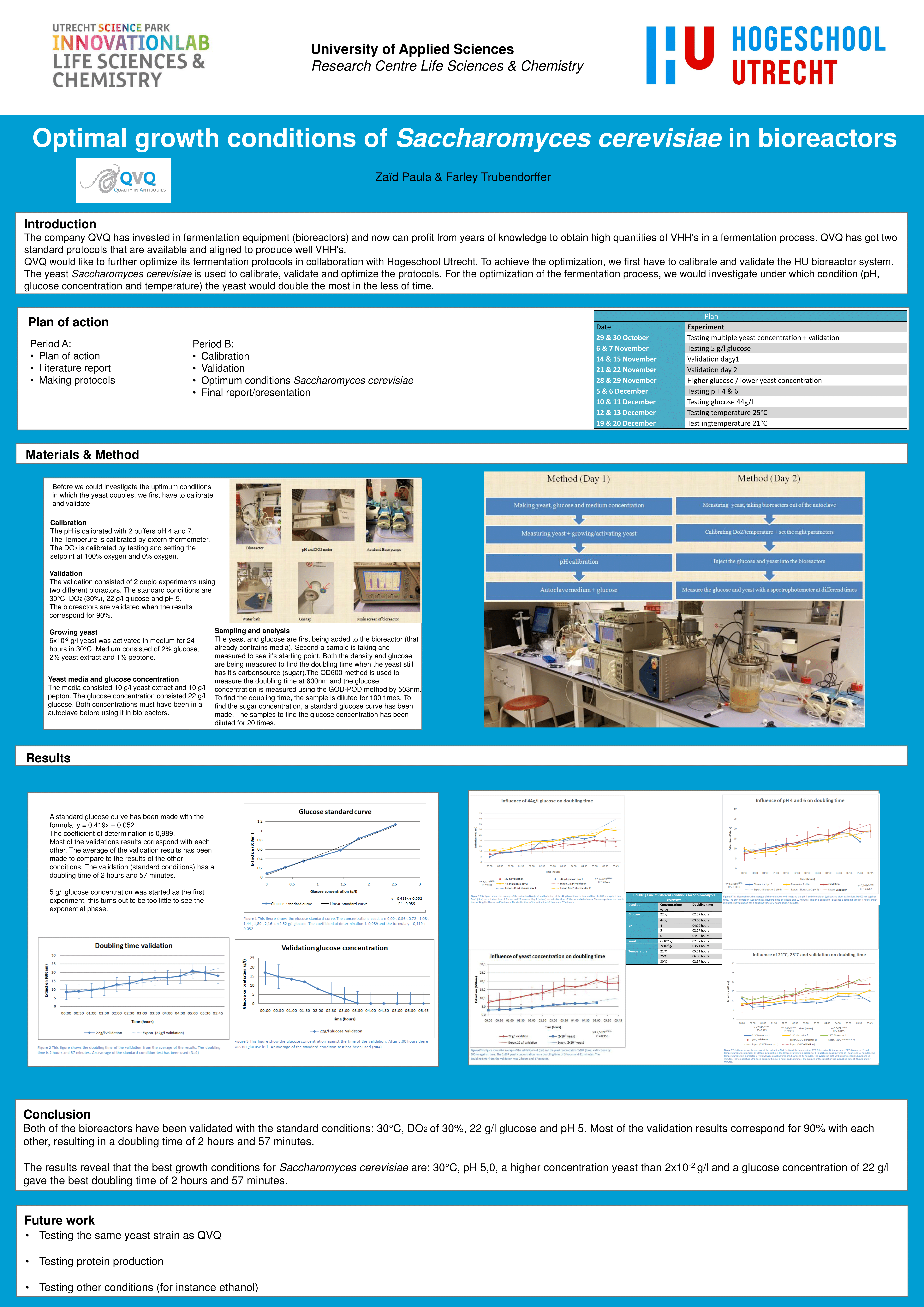Question:
The company QVQ has standard protocols that are available and aligned to produce Lama antibodies VHH's. QVQ would like to further optimize its fermentation protocols in collaboration with Hogeschool Utrecht. To achieve the optimization, we first have to calibrate and validate the HU bioreactor system. The yeast Saccharomyces cerevisiae is used to calibrate, validate and optimize the protocols. For the optimization of the fermentation process, we would investigate under which condition (pH, glucose concentration and temperature) the yeast had a higher doubling time.
"Learning how to handle a bioreactor and doing research for optimal yeast growth" - Farley and Zaïd, students working on this project
Approach:
After a literature search, the bioreactors were calibrated and validated. Subsequently different parameters were changed to investigate what the effect was on the growth conditions of Saccharomyces cerevisiae.
Result:
Both of the bioreactors have been validated with the standard conditions: 30°C, DO2 of 30%, 22 g/l glucose and pH 5. Most of the validation results correspond for 90% with each other, resulting in a doubling time of 2 hours and 57 minutes.
Although different parameters were changed, the results revealed that the best growth conditions of Saccharomyces cerevisiae are: 30°C, pH 5,0, a higher concentration yeast than 2x10-2 g/l and a glucose concentration of 22 g/l. The doubling time was 2 hours and 57 minutes.


